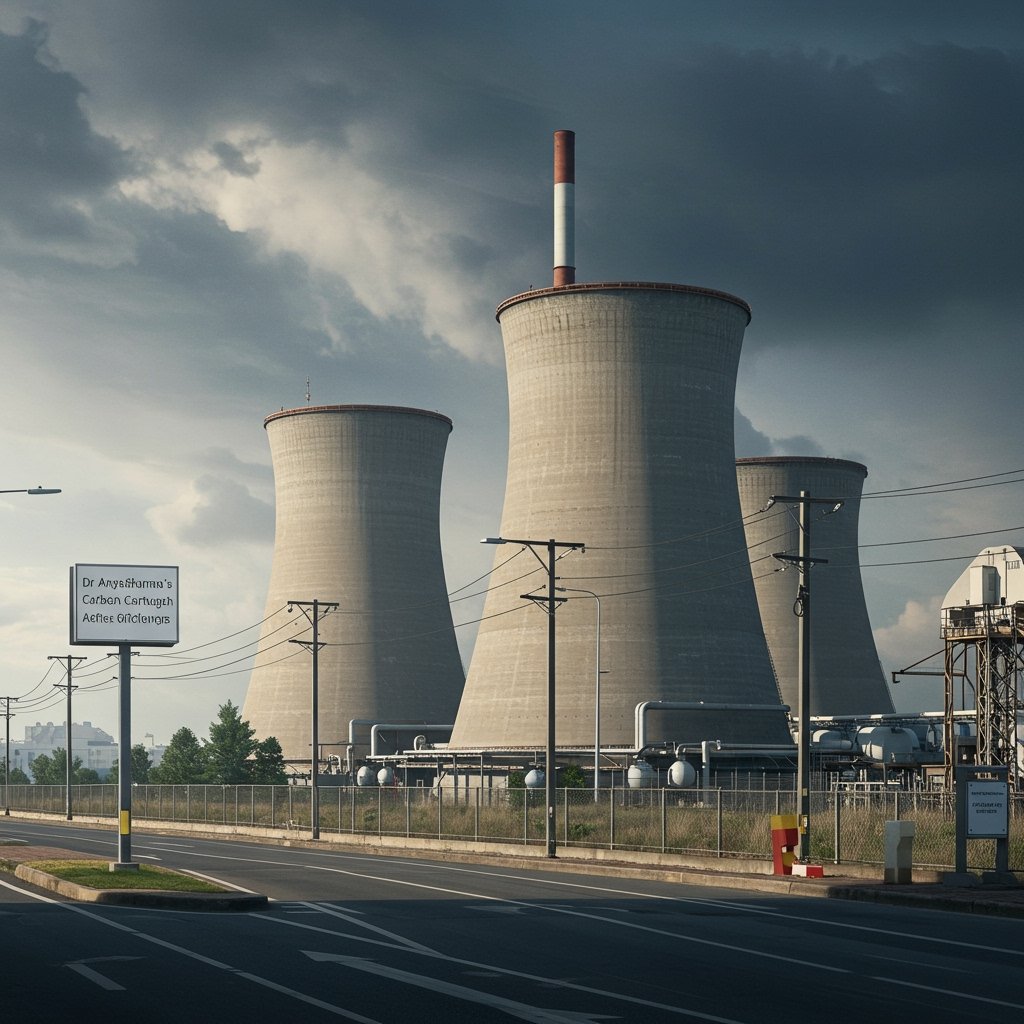Landmark Breakthrough in Industrial Carbon Capture Announced
In a significant development poised to reshape the landscape of industrial emissions control, Dr. Anya Sharma, a distinguished lead researcher at the prestigious Global Climate Institute (GCI), has announced the successful culmination of large-scale trials for her groundbreaking carbon capture technology. The results, recently unveiled by the GCI, demonstrate a level of efficiency and cost-effectiveness that experts believe could dramatically accelerate the global fight against climate change.
The innovative system, developed under Dr. Sharma’s direction, underwent rigorous testing over an intensive period of six months. The trials were conducted at a major steel plant located in Essen, Germany, a region known for its heavy industrial presence. This real-world setting provided an ideal, challenging environment to assess the technology’s performance under typical operational conditions found in energy-intensive industries.
Unprecedented Efficiency and Economic Viability
One of the most compelling findings from the Essen trials is the technology’s exceptional performance in capturing carbon dioxide (CO2) directly from industrial flue gases. The system achieved an remarkable 98% efficiency rate in removing CO2 emissions, a figure that positions it among the most effective carbon capture methods tested to date at this scale in an operational industrial environment. This high efficiency is critical for industries facing stringent emissions regulations and seeking to drastically reduce their carbon footprint.
Beyond its technical prowess, the economic profile of Dr. Sharma’s technology presents a significant advantage. According to the GCI’s preliminary assessments, the new method is reportedly 40% cheaper to implement and operate compared to existing, commercially available carbon capture technologies. The high costs associated with traditional carbon capture and storage (CCS) have long been a major barrier to widespread adoption across heavy industries such as steel, cement, and chemicals. This substantial cost reduction could make the technology economically viable for a much broader range of industrial applications, enabling companies to invest in emissions reductions without prohibitive financial burdens.
Rigorous Testing and Real-World Performance
The six-month trial period at the major steel plant in Essen, Germany, provided comprehensive data on the system’s durability, scalability, and performance stability under continuous operation. Testing in a live industrial setting, handling the complex composition and high temperatures of actual flue gases, is crucial for validating a technology’s readiness for market deployment. The sustained 98% efficiency rate over this extended period indicates the technology’s robustness and reliability, addressing concerns often associated with the long-term viability of carbon capture systems.
The GCI researchers emphasized that the trials involved capturing CO2 directly from the plant’s operational processes, demonstrating its applicability to point-source emissions from heavy industry – a sector notoriously difficult to decarbonize. The success in this challenging environment bodes well for its potential deployment across diverse industrial facilities globally.
Path to Deployment and Global Impact
Looking ahead, the Global Climate Institute has outlined a clear timeline for making this technology accessible. GCI plans to release the full technical specifications and detailed licensing information for Dr. Sharma’s carbon capture system by the end of Q3 2025. This step is crucial for enabling engineering firms and industrial operators to evaluate and adopt the technology.
Following the release of specifications and licensing terms, the GCI anticipates rapid deployment of the technology across heavy industries worldwide. The combination of high efficiency and significantly reduced costs is expected to incentivize companies to invest in carbon capture at an unprecedented scale, far exceeding the adoption rates seen with previous technologies.
Expert Acclaim and Climate Goals
The announcement has garnered enthusiastic reactions from climate scientists and industry experts. Many hail the development as a potential game-changer in the critical fight against climate change. For years, the lack of scalable, cost-effective solutions for capturing emissions directly from large industrial sources has represented a significant gap in climate mitigation strategies.
Experts agree that the widespread adoption of this technology could play a vital role in helping nations meet their climate commitments, particularly the ambitious targets set forth in the Paris Agreement. By providing industries with a practical and affordable means to drastically cut their direct CO2 emissions, the technology could accelerate the transition to a low-carbon economy and help keep global temperature increases below critical thresholds. The potential to reach Paris Agreement targets sooner is a powerful motivator for policymakers and industries alike.
Dr. Sharma’s achievement represents a significant leap forward in the quest for effective carbon capture solutions. The successful trials in Essen, Germany, demonstrating high efficiency and substantial cost savings, pave the way for a new era of industrial decarbonization. As the GCI prepares for the public release of the technology’s details, anticipation is high regarding its potential to revolutionize emissions control and contribute meaningfully to global climate action.





